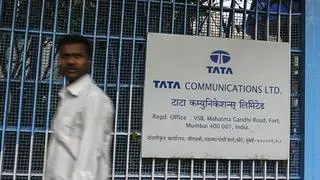We have discussed how to buy calls and puts. But buying calls or puts involves significant cash outlay. Also, options are wasting assets because time decay (or theta) reduces option price with each passing day. It is, therefore, important to consider spread strategies. In this article, we discuss when it is optimal to set up spreads.
Spread benefits
A spread refers to a strategy where you buy one strike and short another strike option, using either calls or puts. You are said to be long on a spread if the option you buy has a higher price than the option you short. Because of this, you have a net cash outflow and, therefore, the strategy is referred to as a net debit spread.
Why should you set up a spread? The total cost of a spread will be lower compared to a simple long position. This is because you receive premium on the option you short which will lower the cash outflow for the option you buy. Of course, the flipside is that your profit will be lower. If you buy, say, a 14,000-strike call option and the underlying moves to 14,500 at option expiry, your call option is worth 500 points. And if you paid 200 points to buy this option, your total profit is 300 points times the contract size.
But suppose you set up a spread by buying the 14,000 call and shorting the 14,300 call, the maximum profit is the difference between the strikes less the net debit; that would be 300 points less the net debit, even if the underlying trades at 14,500 at option expiry. This shows that the upside is capped when you set up a spread. Why? When the underlying moves beyond 14,300, the short option will also become in-the-money. Therefore, the intrinsic value of 200 points (14,500 minus 14,300) on the short option, being a loss, will reduce the gains from the intrinsic value of the long option.
So, how should you set up a spread? The option you short should be one which has a high likelihood of expiring worthless so as to capture optimal profits based on your view of the underlying. Suppose based on the price charts, you find that the underlying is likely to face resistance at 14,200. You should short a strike that is immediately above 14,200. This gives you some room for error even if the underlying trades above 14,200 at option expiry. Think of this rule as a parallel to having a stop-loss that is one to five points below the support level when you trade a stock in the spot market. As for the option that you have to buy, you should use the implied volatility rule to pick the strike that is cheap and then check the change in open interest to account for its liquidity.
Optional reading
Your long option will lose value due to time decay whereas the short option will benefit from time decay. Therefore, the spread will lose less from time decay (theta) compared to a simple long option position. The flipside is that option Greeks that are favourable to a long position- delta and gamma- will be lower for spreads, because of the negative delta and gamma for the short option.
A spread trade is meaningful only if the premium on the short option is sizeable enough to reduce the cost of the long option, and also provide for handsome profits. Importantly, you should setup the spread only if you observe a strong resistance or a support level for the underlying. The margin requirement for the short option in a spread will be significantly lower compared to a naked short position. Given that options on the NSE are European-style, traders typically close their spreads well before expiry to avoid liquidity issues on profitable positions.
The writer offers training programme for individuals to manage their personal investments.
Looking to understand derivatives better? Send your queries to derivatives@thehindu.co.in)








Comments
Comments have to be in English, and in full sentences. They cannot be abusive or personal. Please abide by our community guidelines for posting your comments.
We have migrated to a new commenting platform. If you are already a registered user of TheHindu Businessline and logged in, you may continue to engage with our articles. If you do not have an account please register and login to post comments. Users can access their older comments by logging into their accounts on Vuukle.